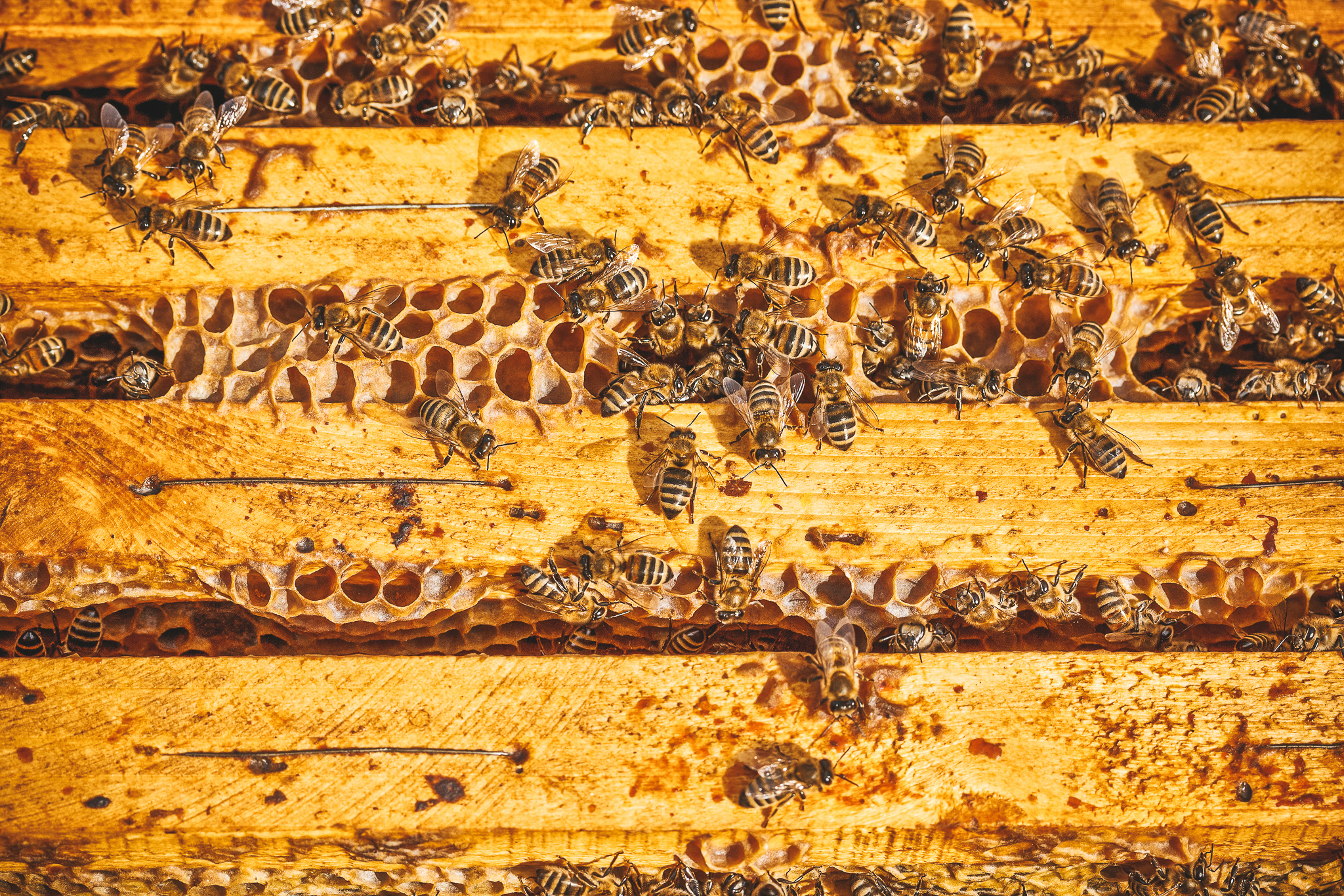What’s Happening to Our Honeybees?
I believe the honeybees are telling us what we need to hear and showing us what we need to see, we must listen. They are revealing to us the consequences of our growing disconnection with not only them but nature as a whole. I believe when we started to see our honeybee colonies rapidly decline something began to shift in the hearts of many.
How could we be harming these sweet selfless beings who provide us with medicine, food, and so much more?
This question is complex in many ways, how did we get to this point?
In order to understand our current predicament, it’s important to understand a little history.
It’s virtually impossible to talk about Colony Collapse Disorder and honeybee decline without first discussing the honeybees’ involvement in commercial pollination and agriculture. Today the honeybee is the chief pollinator of many specialty crops. The honeybees contribute more than $15 billion dollars to U.S. crop production, and in terms of food, a third of every bite of food we consume in the U.S. would not exist without the pollination of honeybees. Honeybees started to become involved in the commercial pollination industry in the early 20th century as the agricultural landscape of the United States was becoming more and more industrialized.
As the honeybee became more and more involved in the industrialization of agriculture through commercial pollination, beekeeping also changed. In many ancient civilizations and in many cultures and traditions around the world working with honeybees was considered a great honor. The honeybees weren’t valued solely on their monetary value but rather the honeybee was revered as sacred, as a wise teacher, and a healer. However, the industrialization of agriculture also brought about the industrialization of beekeeping. The dominant paradigm of beekeeping today is a product of this industrialization. In order to meet industry/commercial demands the biology of the honeybee is manipulated in many ways. The way honeybees naturally reproduce is suppressed; swarming a sacred act of the hive reproducing itself is stopped at all costs; even clipping the wings off a queen bee is a common act to prevent her from flying and swarming. This act alone brings tears to my eyes; how could they remove the wings from a queen?
It doesn’t stop there. If a hive doesn’t swarm, the queen bee doesn’t mate with drones allowing her to fertilize larvae and create female honeybees, so they artificially inseminate queen bees. In this way they completely take over her natural means of reproduction.
These practices have some real ecological consequences. Rudolf Steiner the founder of biodynamic farming warned us humans when these practices began taking place. He predicted that if we continued to manipulate the reproduction of honeybees, we would see their decline, and well that is coming true today. When we allow honeybees to reproduce naturally, they are more genetically adapted to their bioregion. Honeybees that swarm and reproduce in this way are stronger and possess more of their innate genetic behaviors.
It’s not just the manipulation of their genetics that is harming our honeybees, but I do believe it to be a major contributor. Widespread pesticide use also puts our honeybees at constant risk as does habitat loss. In commercial agriculture honeybees are forced to pollinate monocultures often ridden with pesticides. Honeybees like humans thrive on biodiversity, they need a diverse diet of various pollen sources throughout the season. In the honey production industry, honey is often harvested in fall and honeybees are fed sugar water in its place. The predominant reason honeybees make honey is to make it through the winter, it is not only an energy source but the honeycomb itself acts as insulation in the colder months. So, we’ve compromised their nutrition and exposed them to pesticides, these things lead to weakened immune function in our honeybees making them more susceptible to disease, and things like the Varroa mite, so than commercial beekeepers have to chemically treat their hives. It’s a vicious cycle.
Colony Collapse Disorder is about much more than pesticide use or the varroa mite. It’s about our disconnect from nature, instead of working with nature we constantly work against it. We manipulate natural cycles and rhythms, so they better cater to the demands of modern-day society. Human convenience often prevails at the detriment of nature and this is true with our honeybees.
Sources:
Evans, Jay D., and Marla Spivak. “Socialized medicine: Individual and communal disease barriers in honey bees.” In the Journal of Invertebrate Pathology 103: S62-72, 2010.
Halter, Dr. Reese. The Incomparable Honeybee and the Economics of Pollination. Canada: Rocky Mountain Books, 2009.
Horn, Tammy. Bees in America: How the Honey Bee Shaped A Nation. Lexington, Kentucky: The University Press of Kentucky, 2005.
Pellet, Frank C. History of American Beekeeping. Ames, Iowa: Collegiate Press, 1938.
Pollan, Michael. “Our Decrepit Food Factories.” The New York Times Magazine, December 2007.
Seeley, Thomas D. Honeybee Democracy. Princeton, New Jersey: Princeton University Press, 2010.



